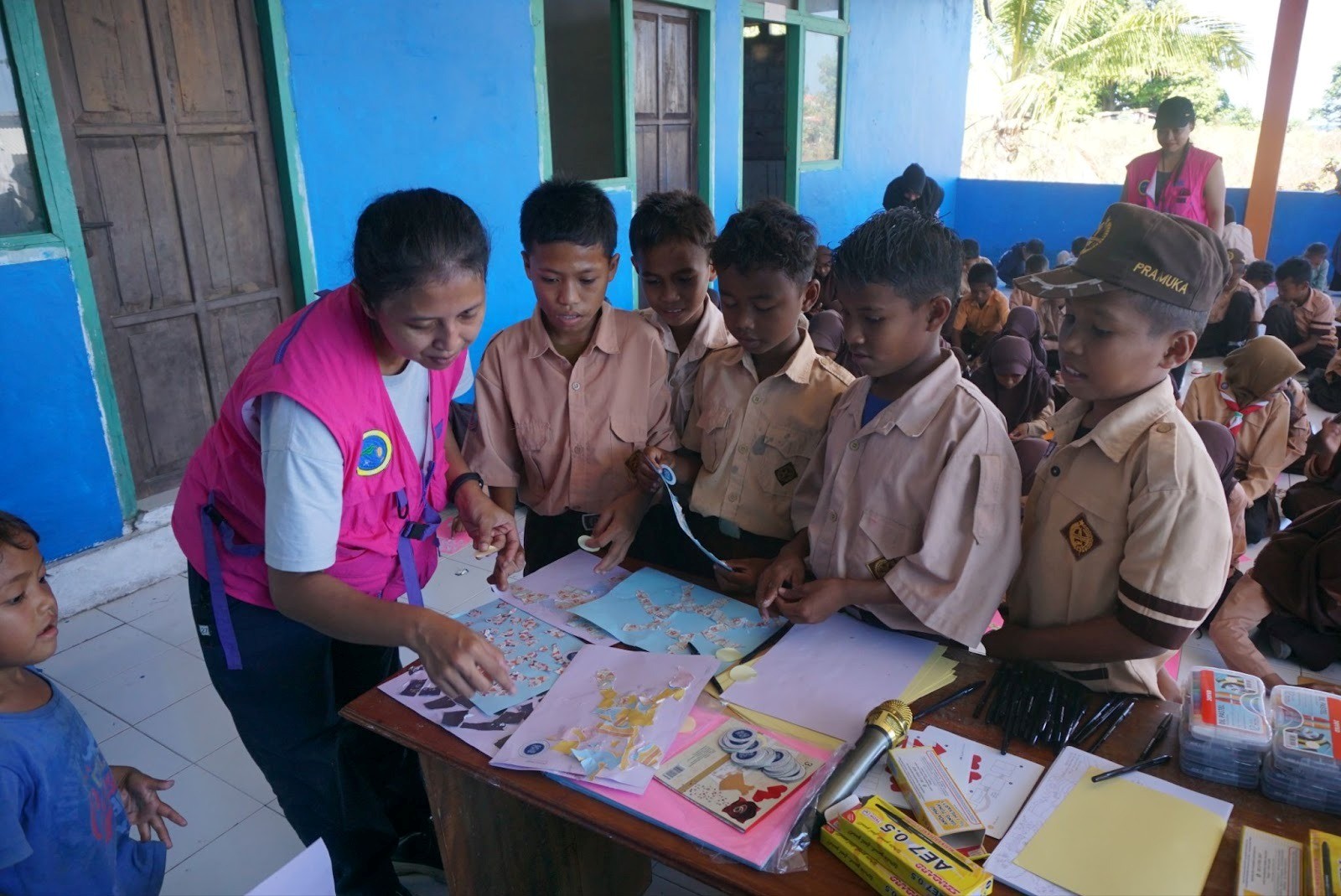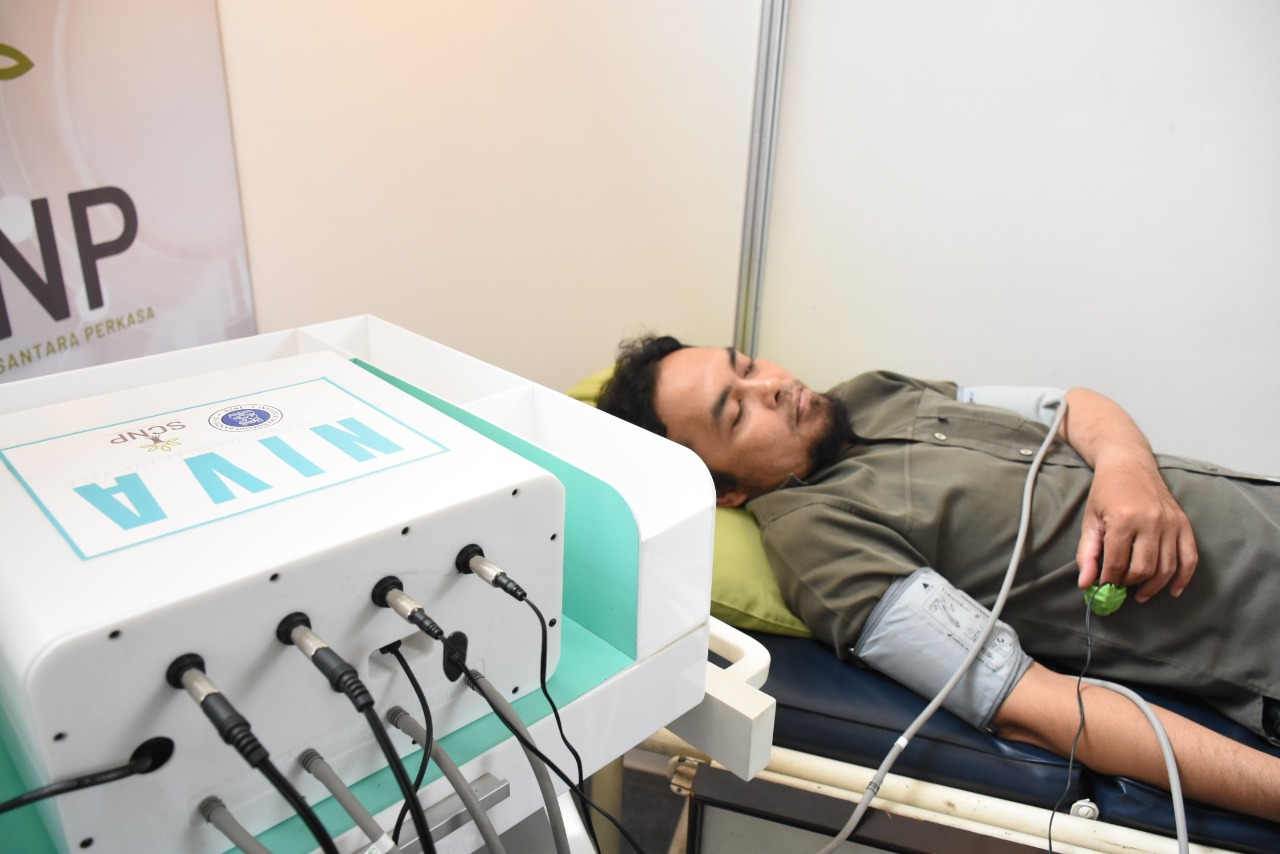ITB's Airgency Ambu-Bag Ventilator Passes the Health Facility Safety Center's (BPFK) Performance Test
By Adi Permana
Editor Adi Permana

Bandung, itb.ac.id—Ambu-Air-based ventilator developed by a team from the Faculty of Mechanical and Aerospace Engineering (FTMD) Institute Teknologi Bandung (ITB) passed the function and endurance test of the Indonesian Ministry of Health's Health Facility Safety Center (BPFK) on 11 May 2020. Subsequently, the medical device will be clinically tested.
Airgency is a BVM (Bag-Valve-Mask) type ventilator with resuscitation function. The air bag is pressed by two automatic clamps which are carefully controlled so that all the ventilation parameters needed by the patient can be achieved. The Airgency 5.0 version has been refined to work reliably, with due regard to portability, aesthetics and ease of production.
This portable ventilator with a dimension of 22x24x37 cm for COVID-19 patients uses automated air bag technology. Therefore, there is no need to pump it manually as seen in the conventional model. This innovation is intended for patients at stage three or the most critical stage in which the patient has experienced lung dysfunction, which causes the patient to be unable to breathe and needs breathing aids. Currently, Airgency has passed three types of mandatory tests for a new medical device, which are: a function test to check the features of the system, an angle safety test to ensure that the device and its functions do not harm health workers and patients (such whether there are sharp angles found) and an endurance test, which is a test to examine whether the device can be operated for two days without being switched off. The next mandatory test is a clinical trial.

Among the team members who developed this device are Dr. Yazdi I. Jenie, Dr. Djarot Widagdo, Christian Reyner M.T., and Dr. Khairul Ummah from Faculty of Mechanical and Aerospace Engineering (FTMD), and Muhammad Ihsan from Faculty of Arts and Desgin (FSRD). The team worked with PT BETA (Bentara Tabang Nusantara) in the design process and coordinated with a team of doctors from Universitas Padjadjaran (UNPAD) and Hasan Sadikin Hospital. The team also coordinated the testing phase with Dr. Reza Widianto Sudjud, Sp.An-KAKV, KIC, M.Kes. and Dr. Ike Sri Rejeki, Sp.An-KIC, M.Kes. of UNPAD's Faculty of Medicine.
Features in the ventilator
Christian Reyner, lecturer at FTMD ITB, explained that the main function of the Airgency Ventilator is to replace a device that has previously been operated manually. The advantage of this device is that it has a simple system, can be operated easily and bears a low cost production. "We hope that by passing the clinical trials, once we have obtained a distribution authorisation, we can immediately produce this device and distribute it to the hospital," he stated to ITB's Public Relations officials via teleconference video on Friday (05/15/2020).
He explained that the device has parameters to regulate how much oxygen enters the lungs of the patient. This is due to, as Reyner explained, the fact that everyone has different breathing patterns and oxygen requirements. Therefore, when using the Airgency Ventilator, doctors can adjust the device to suit the condition of their patients. Other settings are called inspiratory and respiratory, which is the ratio between the amount of oxygen supply received and the amount expelled. "For example, 1: 2 or 1: 3. All of this can be arranged by doctors who are in charge of treating patients," he said.
The next function is the volume setting. Since each patient has a different volume of air, e.g. 300 ml, 400 ml, 500 ml, the device can also be adjusted according to the volume capacity of the patients (in receiving oxygen supply). In addition, a warning system that detects any malfunction of the device with a marked "beep" sound is another feature that holds the same importance with other features of the machine. "For example, let's say when the device is operated, a breathing hose was accidentally released. With this kind of situation, the the device will make a beep sound for four times, and thereafter a detection for fine leakage will run, there are also warnings of low, high or over-pressure conditions, related to lung capacity and tidal volume given by doctors," he added.
Furthermore, this Airgency Ventilator also features an automatic power source transfer system from the AC to the battery. This is to anticipate the occurrence of power failures, the device will the be powered by batteries and it will continue to operate without interruption. "Our system can last for 3-4 hours on batteries," he said.
In addition, the device also has another feature, namely peep bottle or also known as peep and expiratory pressure. Its function is to ensure that the final lung pressure is not zero or that the lungs of the patient are too deflated.
Preparation of clinical trials
In the interview, aside from ITB's Communication and Public Relations Bureau officials and the Airgency Ventilator innovators who attended the meeting, Dr. Reza Widianto Sudjud, Sp. An-KAKV, KIC, M.Kes from the Faculty of Medicine UNPAD also present. He explained that the clinical trial of this device had been submitted to the Medical Committee of the Ministry of Health. "At the moment we are still waiting for the decision on whether the feasibility of clinical trials is the right tool to be used or not," he said.
Dr. Reza said that the Airgency Ventilators will not be tested directly on patients. The reason for this is that, if the patient is going to be tested we need to obtain the patient's family consent, while this tool is intended for patients who stop breathing or are in critical condition. "It is not possible if it is tested directly on patients. Therefore, we are going to compare Airgency Ventilators with ventilators that are manually pumped by human hands, and what is going to be assessed is the tidal volume, the pressure, etc," he said.
A device that has been tested for functional testing is required in clinical trials for the Airgency Ventilator device. Not only one device, but a number them will be tested so that we can be sure that this ventilator can be replicated and used. The clinical trial is planned to take place in the Laboratory of UNPAD's Faculty of Medicine.
"The creation of this device is done in good faith to help each other, because each person has different capacities, but despite these differences still try to help each other. But I hope that this does not happen only during the COVID-19 pandemic, we must continue to make progress in the production of the devices we have made, as expected by the government," he said.
Reporter: Adi Permana
Translator: Moch. Akbar Selamat
Editor: Rizvika Rahmita Salim

.jpg)


.jpg)
.jpg)

